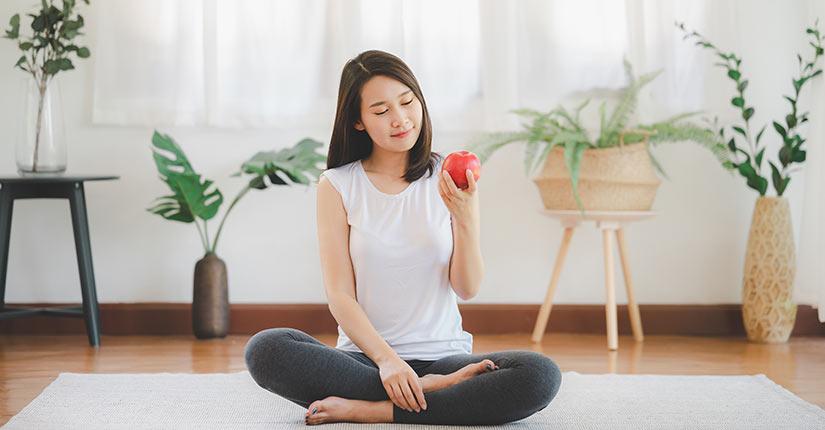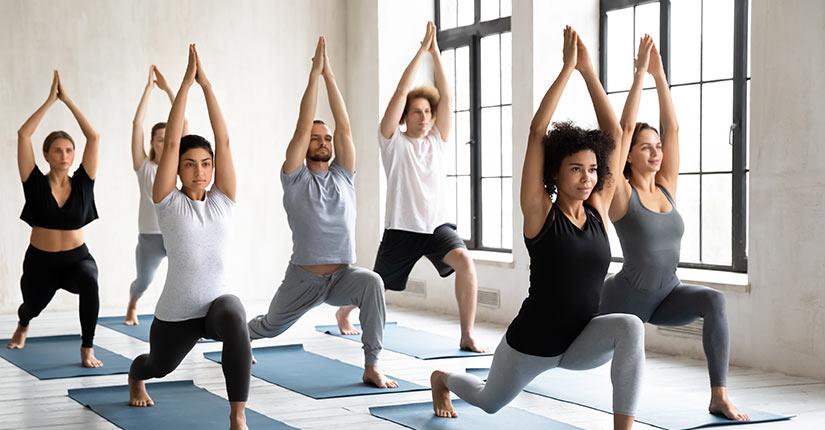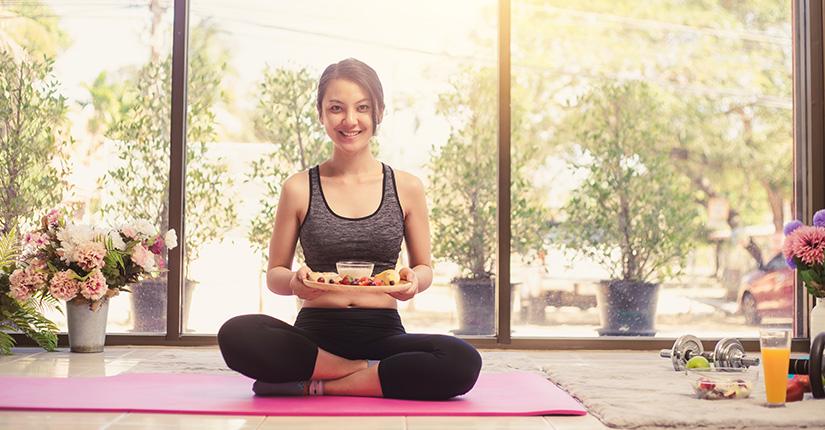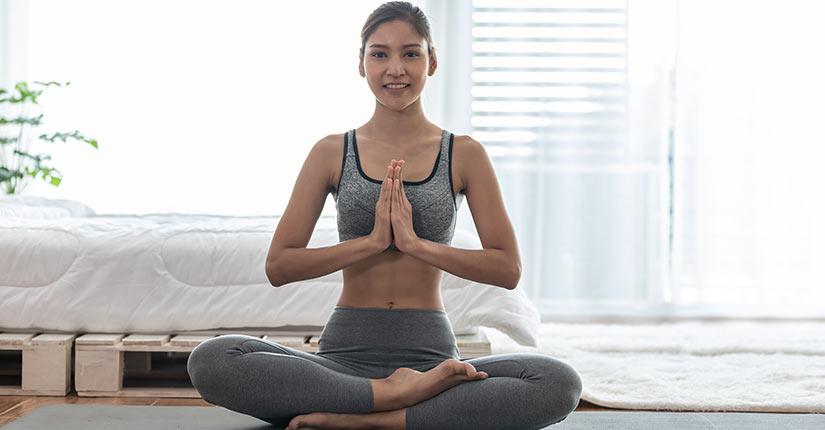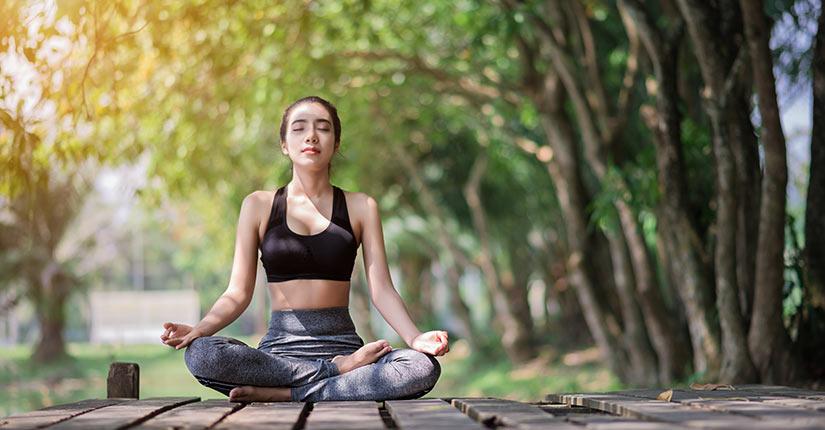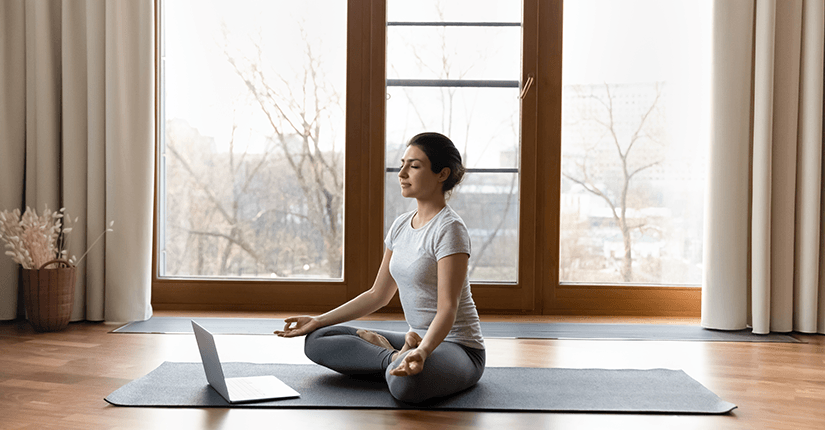
Attending a yoga class from your home could help alleviate (if not completely resolve) these problems. But it’s certainly not a complete solution online yoga classes have the same challenges.
Let’s explore the advantages and disadvantages of Indian yoga expert online, and also how to benefit from all the advantages. We’ll give you 8 suggestions for safely practicing yoga at home, even if you are the instructions of a virtual instructor. We’ll also show how to find the most effective yoga video to follow.
The benefits Of Virtual Yoga:
The Benefits of Virtual Yoga:
Advantage #1: It’s more affordable: However you define this, “real life” yoga courses are much more expensive than online ones. Classes that are drop-in usually cost anywhere from $10 and $20. Many studios will offer less expensive rates if purchase classes in large quantities.
Online courses, on contrary, are typically offered for as little as $5 per class. You can purchase a monthly subscription package for around $8 to $25, take weekly five courses and the price per class is very low.
Yoga is much less expensive.
Advantage #2: It’s speedier: If going to an exercise class is as simple as placing your mat and hitting “play,” it’s more likely that you’ll be doing it.
Between getting into the car, driving to the parking, and walking into (and repeating the same process after you have left) In-person classes will often take up 2 hours of your time. A course online is a snap to start.
Benefit #3 Benefit #3: It’s flexible: Like the best Indian yoga expert stunning woman performing a headstand on the front row the online classes are adaptable. Because you can pick between five and 90-minute video clips, it’s simple to squeeze one in. Running behind schedule? Do a short class. Have time? Do a long run or binge several in a row.
If you’re attending an instructor-led class, you typically have three options 30 minutes for 45 mins, 60 minutes or 90 minutes. It’s wonderful to have a wider selection.
You can also take whatever class you’d like to regardless of just what the studio has to offer depending on the day and time you’re at. Perhaps you’re looking for a slow and peaceful class. Perhaps you’re searching for something that is quick and tests you. All you have to do is research and choose your top pick.
Advantage #4: It’s easy to travel with: If you’re trying to keep your routine yoga during your travels You’ll be delighted by yoga online courses and yoga apps. If you’re in an unfamiliar location and not in the routine, finding time to, space and motivation to exercise can be extremely difficult.
It lets users set up their screen wherever and at any time and go through a sequence or take a class as an exercise. Yoga on the go can be — at least, if not automatically easy, it’s a lot easier.
5 Benefits: it provides you access to incredible instructors: The majority of us will never be able to experience a best yoga teacher from one of the most renowned instructors in the world. In person, that’s. It is possible to take almost unlimited classes with incredible yogis online. This is a fantastic opportunity to learn yoga from people who can inspire you.
Benefit #6 6: It’s less daunting: No matter if you’re an experienced yoga practitioner or a novice we’ll admit it: walking into a class of yoga isn’t easy. Perhaps you’re worried that you’ll not be able to perform all of the poses or follow the instructor’s instructions. You might feel different from others in the class or are worried that your outfit isn’t “right” clothing.
The anxiety isn’t as strong when you’re at home. Who will be judging you for wearing an old t-shirt or even your cat? It’s usually easier to fall into a calm, peaceful state while in the peace and peace of your home or your apartment.
While online yoga has its own disadvantages.
The disadvantages of Virtual Yoga.
The disadvantage of Virtual Yoga
One disadvantage There’s no guarantee of safety: If you don’t have guidance from a trainer You could be doing postures incorrectly, resulting in poor posture and bad habits, and even injuries. A teacher can assist you to get better by pointing out and correcting your errors.
Without this individual attention, yoga can be difficult to master.
Second disadvantage There’s no communal aspect: While doing Indian yoga
on your own is certainly relaxing, there’s something unique about doing yoga with others. It’s a bonding experience with your classmates that’s typical and isn’t unexpected since you’re all part of a deeply, usually significant experience. If you like going to the space and seeing old friends or making new friends during the class, then online yoga may not be the best option for you.
Advantage #3: It’s simpler to delay: If you’ve signed up for the class, you’re probably going to attend (especially when you’ve paid prior to the class). If you’re planning to do videos — which are accessible at any time you might put off the task. “I’ll complete it before lunch” changes into “I’ll complete it after running my chores” transforms into “I’ll finish it after we’ve finished eating dinner” and changes to “It’s time to get to bed So, I’ll try to practice in the morning.
Do you require someone or something to keep you accountable? This could be a problem when it comes to online courses.
Fourth disadvantage: It’s more difficult to follow
Some people have difficulty learning online yoga.
It’s difficult to complete the poses and at the same time check the display to ensure that you’re performing them correctly,” says Lindsey Allen Graphic designer who has been practicing yoga for a few years. “I’d prefer to attend classes in person in which an instructor is able to modify my postures.”
Allen recommends streaming your videos onto the TV rather than your laptop’s screen in case you’re experiencing this problem.
Why Should You Join an Online Yoga Class?
So, can online classes help future generations of yoga teachers? Should you keep the centuries-old practice of doing yoga in the real world? There is a choice… either!
There is no need to pick between the two. Combining live-world classes with online classes and the reverse is the ideal method to make your training easy cost-effective, consistent, reliable and also efficient secure, challenging, and safe.
Here are a few suggestions for how you can take advantage of all the benefits without having to worry about the drawbacks of online yoga classes from your home:
1. Do not start by taking an online class: If you’re completely unfamiliar with yoga (like you’ve never practiced any type of yoga that is guided) It’s best not to begin by taking online classes on your own (although classes online would be more beneficial than trying your first yoga poses by yourself).
In-person classes are a good way to master the right postures (at minimum, the basic ones) so that you can incorporate them into your practice routine and your flow from home. A teacher in person can identify your strengths and weaknesses and highlight them to you, and show you how to correct the problem. You’ll learn what the proper posture is like in every pose, making them automatic to you. This will provide you with an idea of what you should be doing to follow with the help of a virtual instructor.
2. Find the best online yoga class: All online yoga classes are the same. What is the best yoga video? Image quality? Sound? Music? Nope. What makes an efficient online yoga video is the teacher – the rest is only sounds and bells. An experienced yoga instructor must be able to instruct you through the process primarily via vocal, before presenting visually the poses to themselves or someone other. Check out videos that are able to comprehend the instructor’s instructions while your eyes are closed so that you can follow along even if not watching the video.
Find out more about professional yoga instructors online who are able to show you how to perform postures. Check out their reviews, look over their videos for free, and avail yourself of their trial offers. Don’t compromise your safety.
3. Be extra attentive to your body: In a yoga teachers you’ll know that your instructor’s been there for you, which frequently leads you to do the posture in the way you think is the right way to do it, thinking “if I’m doing something wrong the instructor will inform me”. When you practice online yoga at home, the burden is on you. This is actually a huge benefit! You’re required to be in tune with your body, and pay attention to each bone and muscle to make sure that your posture is right.
4. Join an online community: Most of the time, the top yoga classes on the internet are also part of an active online group. This may be found on Instagram or a private Facebook group or forum or almost any place! You can join this community to find encouragement connection, support, and guidance on something you are truly passionate about.
5. Make use of the buttons to pause and rewind: If you’re having fun in the virtual classroom, and you’re forced into a posture you’ve never heard of and aren’t able to master in a hurry by putting your head in the opposite direction to the monitor, stop and then rewind. It’s not necessary to fumble or be upset that you have to stop. You can watch your instructor perform the posture as many times as you can before proceeding. It’s worth it.
6. Be aware of when to stop: Painful” is not the same as “challenging”. If your yoga instructor experience intense shooting pain, numbness, or burning sensations down your limbs, or any painful pain in your knees wrists, elbows, or neck, modify and relax your posture until it feels more comfortable. If it does not improve, then you can snake it out. Don’t push. (Now is a good opportunity to participate in the online community by asking questions!)
7. Always finish in Savasana: A great yoga video will always end with Savasana However, If it doesn’t, ensure that you practice it on your own to give your flow a final push and reap the benefits throughout your day.
Namaste.
